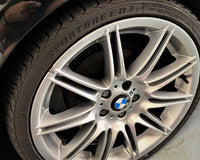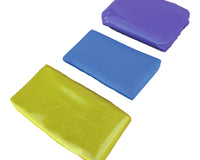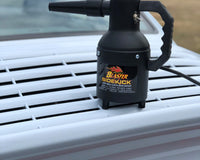Driving on freshly paved roads or through construction zones can leave your car’s exterior covered in unsightly and stubborn road tar and asphalt residue. These sticky, black deposits not only ruin your car’s appearance but can also damage the paint if left untreated. Removing road tar and asphalt requires the right techniques and products to ensure your car’s finish remains unharmed.
In this comprehensive guide, we’ll explore the best ways to remove road tar and asphalt residue from your car. From understanding what road tar is to step-by-step removal methods and preventive measures, this guide will equip you with everything you need to keep your car looking its best.
What Is Road Tar and Why Is It a Problem?
Understanding Road Tar
Road tar, also known as bitumen, is a sticky, black, and highly viscous liquid used in road construction and maintenance. It binds aggregates like gravel and sand to create asphalt. When roads are freshly paved or repaired, excess tar can splatter onto passing vehicles, especially in warm weather when the material is more pliable.
Why Road Tar Is Harmful to Your Car
Road tar is more than just an eyesore. If not removed promptly, it can cause several issues:
-
Paint Damage: Tar can bond with your car’s paint, making it difficult to remove without damaging the finish.
-
Aesthetic Issues: The black, sticky residue can ruin your car’s appearance, especially on lighter-coloured vehicles.
-
Corrosion Risk: Over time, tar can trap moisture and contaminants, leading to corrosion and rust.

Tools and Products You’ll Need
Before tackling road tar removal, gather the following tools and products:
-
Microfiber cloths: Soft and non-abrasive to avoid scratching the paint.
-
Plastic razor blades: For gently scraping off thick tar deposits.
-
Tar and adhesive removers: Commercial products specifically designed for tar removal.
-
Isopropyl alcohol: A cost-effective alternative to commercial removers.
-
WD-40 or cooking oil: Household items that can help dissolve tar.
-
Car wash soap: For pre-washing and post-cleaning.
-
Clay bar: To remove any remaining contaminants.
-
Wax or sealant: To restore protection after cleaning.
Step-by-Step Guide to Removing Road Tar and Asphalt Residue
Step 1: Park in a Shaded Area
Start by parking your car in a shaded or cool area. Direct sunlight can heat the tar, making it harder to remove, and cause cleaning products to evaporate too quickly.
Step 2: Pre-Wash the Affected Area
Use a car wash soap and a microfiber mitt to gently wash the affected area. This removes loose dirt and debris, making it easier to focus on the tar. Avoid scrubbing too hard, as this can spread the tar or scratch the paint.
Step 3: Apply a Tar Remover
Choose a commercial tar remover or a household alternative like isopropyl alcohol, WD-40, or cooking oil. Here’s how to apply it:
-
Spray or apply the product directly onto the tar spots.
-
Let it sit for a few minutes to break down the tar. Avoid letting it dry on the surface.
-
Gently wipe the area with a microfiber cloth. For stubborn deposits, use a plastic razor blade at a shallow angle to avoid scratching the paint.
Step 4: Use a Clay Bar for Stubborn Residue
If some tar remains, a clay bar can help. Here’s how to use it:
-
Lubricate the surface with a detailing spray or soapy water.
-
Gently glide the clay bar over the affected area in straight lines.
-
Fold the clay bar frequently to expose a clean surface.
-
Wipe the area clean with a microfiber cloth.
Step 5: Wash and Dry the Car
After removing the tar, wash the entire car to remove any residue from the cleaning products. Dry it thoroughly with a clean microfiber towel to prevent water spots.
Step 6: Restore Protection
Tar removal can strip away wax or sealant, leaving your car’s paint vulnerable. Apply a fresh layer of wax or sealant to restore protection and enhance the shine.
Preventive Measures to Avoid Road Tar
While removing road tar is manageable, prevention is always better than cure. Here are some tips to minimise the risk of tar splatter:
1. Avoid Freshly Paved Roads
If possible, steer clear of roads that have recently been paved or repaired. Construction zones are particularly prone to tar splatter.
2. Maintain a Safe Distance
Keep a safe distance from construction vehicles and other cars, especially on freshly paved roads. This reduces the chances of tar being kicked up onto your car.
3. Apply a Protective Coating
A ceramic coating or paint protection film (PPF) can create a barrier between your car’s paint and contaminants like tar. These coatings also make cleaning easier.
4. Regular Washing
Wash your car regularly to remove any tar before it has a chance to bond with the paint. Pay special attention to the lower panels and wheels, where tar is most likely to accumulate.
Common Mistakes to Avoid
1. Using Abrasive Tools
Avoid using steel wool, rough brushes, or harsh scrubbers, as these can scratch the paint. Stick to soft microfiber cloths and plastic razor blades.
2. Ignoring Tar Spots
Leaving tar on your car for too long can make it harder to remove and increase the risk of paint damage. Address tar spots as soon as possible.
3. Skipping the Post-Cleaning Wax
Failing to reapply wax or sealant after tar removal leaves your car’s paint exposed to environmental contaminants. Always restore protection after cleaning.
When to Seek Professional Help
While most tar removal can be done at home, there are situations where professional help is necessary:
-
If the tar has been on the car for an extended period and has hardened.
-
If you’re unsure about using certain products or tools.
-
If the tar covers a large area or has caused significant damage to the paint.
Professional detailers have the expertise and equipment to safely and effectively remove tar without harming your car’s finish.
Conclusion: Keep Your Car Tar-Free and Looking Great
Road tar and asphalt residue are inevitable challenges for drivers, but with the right tools and techniques, they don’t have to ruin your car’s appearance. By acting quickly, using the appropriate products, and following the steps outlined in this guide, you can keep your car looking pristine and protect its paint for years to come.
Remember, prevention is key. Avoid freshly paved roads, maintain a safe distance from construction vehicles, and invest in protective coatings to minimise the risk of tar splatter. And if you ever find yourself overwhelmed, don’t hesitate to seek professional assistance.




